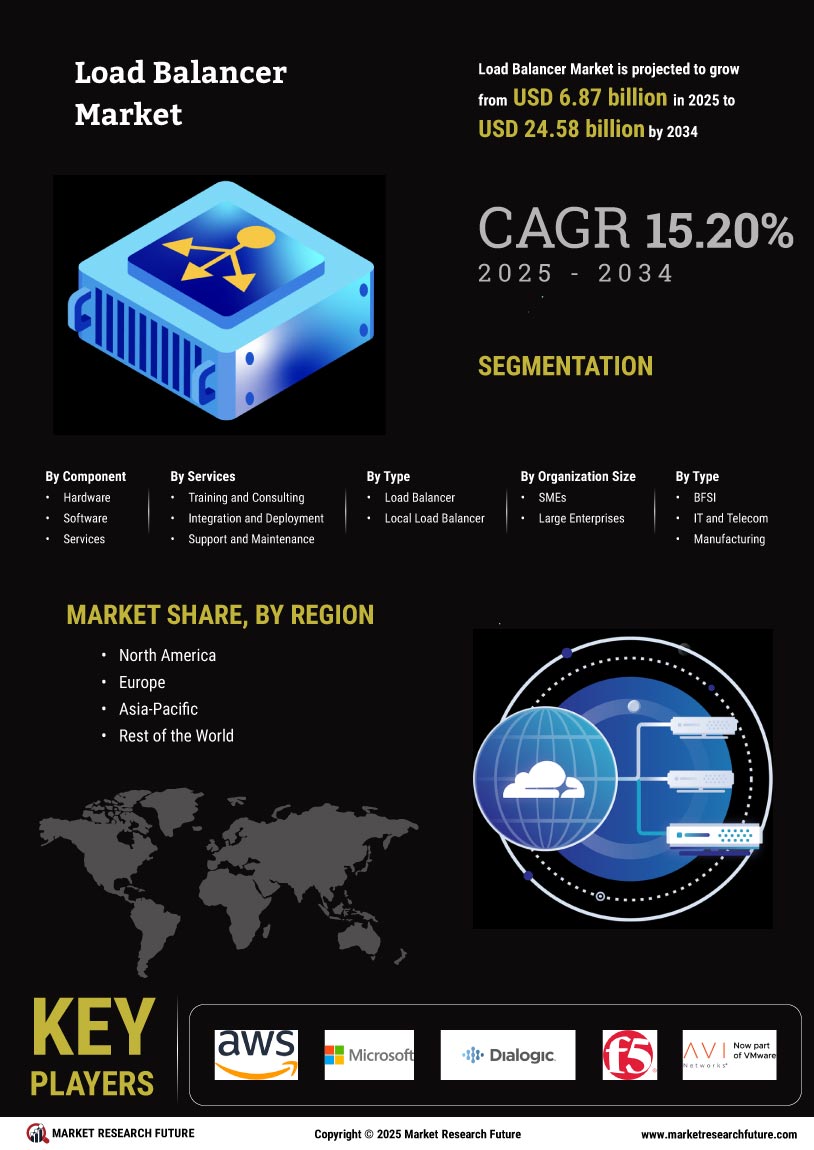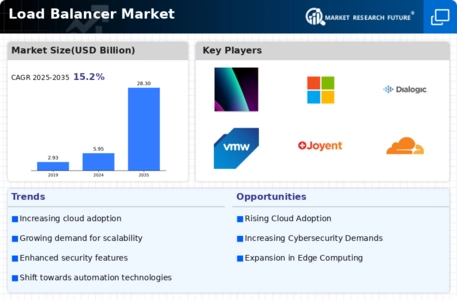Emergence of Edge Computing
The Load Balancer Market is being transformed by the emergence of edge computing, which decentralizes data processing and storage closer to the end user. This shift is driven by the need for reduced latency and improved performance in applications, particularly those reliant on real-time data processing. As edge computing gains traction, the role of load balancers becomes increasingly critical in managing traffic between edge devices and centralized data centers. Industry forecasts suggest that the edge computing market could reach a valuation of over 15 billion dollars by 2026, indicating a substantial opportunity for the Load Balancer Market. Organizations are likely to invest in load balancing solutions that can efficiently handle the complexities of edge computing environments, thereby enhancing their operational capabilities.
Rising Cybersecurity Concerns
The Load Balancer Market is increasingly shaped by rising cybersecurity concerns among organizations. As cyber threats become more sophisticated, businesses are prioritizing the protection of their digital assets. Load balancers are not only essential for traffic distribution but also serve as a first line of defense against potential attacks. Recent reports indicate that over 60 percent of organizations have experienced a security breach in the past year, underscoring the critical need for robust security measures. By incorporating advanced security features such as SSL termination and DDoS protection, load balancers enhance the overall security posture of applications. This trend is likely to drive further investments in the Load Balancer Market as organizations seek to safeguard their operations against evolving cyber threats.
Adoption of Microservices Architecture
The Load Balancer Market is witnessing a paradigm shift with the increasing adoption of microservices architecture. This architectural approach allows organizations to develop applications as a suite of small, independent services, which can be deployed and scaled independently. As businesses transition to microservices, the need for effective load balancing becomes paramount to ensure optimal performance and reliability. Data suggests that companies utilizing microservices experience a 20 to 30 percent improvement in deployment frequency and a reduction in failure rates. Consequently, the Load Balancer Market is poised for growth as organizations seek to implement load balancing solutions that can seamlessly integrate with their microservices frameworks, thereby enhancing overall application performance.
Increased Demand for High Availability
The Load Balancer Market experiences a notable surge in demand for high availability solutions. Organizations are increasingly reliant on uninterrupted access to applications and services, which necessitates the deployment of load balancers to distribute traffic effectively. This trend is underscored by the fact that, according to recent data, nearly 80 percent of enterprises prioritize uptime as a critical factor in their IT strategies. Consequently, the Load Balancer Market is witnessing a robust growth trajectory, as businesses seek to enhance their operational resilience and ensure seamless user experiences. The integration of load balancing technologies not only mitigates the risk of downtime but also optimizes resource utilization, thereby driving further investments in this sector.
Growth of E-commerce and Online Services
The Load Balancer Market is significantly influenced by the rapid expansion of e-commerce and online services. As consumer preferences shift towards digital platforms, businesses are compelled to enhance their online presence and ensure that their websites can handle increased traffic volumes. Recent statistics indicate that e-commerce sales have surged by over 30 percent in the past year alone, prompting companies to invest in load balancing solutions to manage this influx. Load balancers play a crucial role in distributing incoming traffic across multiple servers, thereby improving response times and maintaining service quality. This trend not only bolsters the Load Balancer Market but also highlights the necessity for scalable and efficient infrastructure to support the growing demands of online commerce.


















Leave a Comment